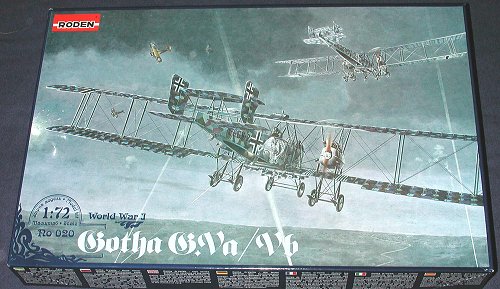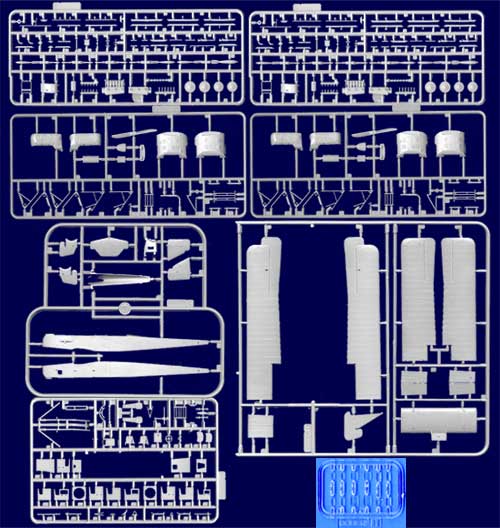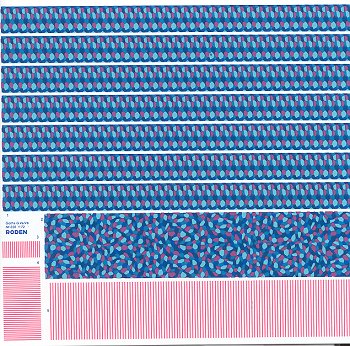
|
KIT: |
Roden 1/72 Gotha G.Va/Vb |
|
KIT # |
020 |
|
PRICE: |
$23.98 (20.97 at Squadron) |
|
DECALS: |
four options |
|
REVIEWER: |
Scott Van Aken |
|
NOTES: |

|
HISTORY |
|
THE KIT |

This is the fourth large Gotha bomber
in 1/72 that has been produced by Roden. As always, there are some common
sprues between them and as a result there has been a bit of flash
introduced. Though not shown on the above image (borrowed from the Roden
site), both of my upper wings had flash on the trailing edges. Some flash
was also on the fuselage sprue, but not to the extent of what was on the
wings. Mercifully, the two upper sprues with all the really fine bits was
free from any molding glitches. As you may guess, some of the parts are
not used on this particular variant.
The kit itself is molded in Roden's usual medium grey plastic and it is a bit on the soft side as has become more the norm with models. The amount of detail in this kit is truly incredible as you can see from the very large number of small parts. The kit says not for children under 3 and I think that should be amended to add 'or those with fumble fingers' as some of the bits are truly small.
You get a really complete kit with detailed cockpits, bomb area and gunners positions. Also well detailed are the engines and the landing gear. This kit is definitely not for the newbie to WWI modeling as there are a plethora of struts and braces. It also benefits greatly from rigging and there is a complete rigging diagram provided. Patience and a good jig are what this kit will need.
As you would normally expect from a WWI German aircraft, there is a lot of lozenge decal needed and Roden provides three full sheets of the material. In addition, there is a full sized template that allows the builder to have precut sections of lozenge ready for application. WIth all that lozenge, there is little on the aircraft that needs painting other than the nose, underside of the fuselage and the engine cowlings. Markings are provided for two similar aircraft:
 Decals are superbly
printed and quite glossy. Roden has had mixed reviews on its decals and I
can only hope that these will work well as finding 1/72 bomber lozenge
decals may not be easy. The instructions are excellent and provide
a superb guide to building and painting the model. Colors are provided in
Humbrol references and generic names.
Decals are superbly
printed and quite glossy. Roden has had mixed reviews on its decals and I
can only hope that these will work well as finding 1/72 bomber lozenge
decals may not be easy. The instructions are excellent and provide
a superb guide to building and painting the model. Colors are provided in
Humbrol references and generic names.
|
CONCLUSIONS |
You can find this kit and many others at

Thanks to the fine folks at
 for supplying a review
kit. Visit them by clicking on the logo
for supplying a review
kit. Visit them by clicking on the logo
If you would like your product reviewed fairly and fairly quickly by a site that has over 200,000 visitors a month, please contact me or see other details in the Note to Contributors.